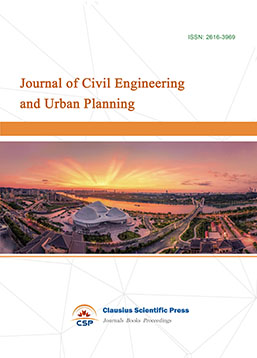Soil Inorganic Carbon Research Progress in China
DOI: 10.23977/LSUH.2018.11004 | Downloads: 46 | Views: 6324
Author(s)
Xiong Yufei 1,2
Affiliation(s)
1 Shaanxi Provincial Land and Engineering Construction Group Co., Ltd. Xi'an 710075, China; Key Laboratory of Degraded and Unused Land Consolidation Engineering, the Ministry of Land and Resources of China, Xi'an 710075, China
2 Institute of Land Engineering and Technology, Shaanxi Provincial Land Engineering Construction Group Co., Ltd. Xi'an 710075, China; Shaanxi Provincial Land Consolidation Engineering Technology Research Center. Xi'an 710075, China
Corresponding Author
Xiong YufeiABSTRACT
Inorganic carbon comprises approximately a third of the total C pool in soils worldwide, largely in the form of pedogenic calcite. Most of the SIC pool is located in arid and semi-arid regions of the world and accumulates as subsurface concentrations of carbonate minerals, predominantly calcite (CaCO3), as the result of minimal leaching through the soil column. The content of SIC is affected by many reasons, climate and land use types are the two major factors. Moreover, human activities play more and more important role in carbon cycle. Understanding the processes governing the storage and flux of this inorganic C pool is crucial to the development of accurate regional and global C budgets.
KEYWORDS
Global change, soil carbon pool,soil inorganic carbon, carbon recycle.CITE THIS PAPER
Yufei, X., Soil Inorganic Carbon Research Progress in China. Landscape and Urban Horticulture (2018) Vol. 1: 24-28.
REFERENCES
[1] Ghosh, S., 2010. <Changes in soil organic carbon pool in three long-term fertility experiments with different cropping systems and inorganic and organic soil amendments in the eastern cereal belt of India.pdf>.
[2] Huang, Y., Sun, W., Zhang, W., Yu, Y., 2010. Changes in soil organic carbon of terrestrial ecosystems in China: a mini-review. Science China. Life sciences 53, 766-775.
[3] Li, S.-L., Liu, C.-Q., Li, J., Lang, Y.-C., Ding, H., Li, L., 2010. Geochemistry of dissolved inorganic carbon and carbonate weathering in a small typical karstic catchment of Southwest China: Isotopic and chemical constraints. Chemical Geology 277, 301-309.
[4] Mi, N.A., Wang, S., Liu, J., Yu, G., Zhang, W., JobbÁGy, E., 2008. Soil inorganic carbon storage pattern in China. Global Change Biology 14, 2380-2387.
[5] Mielnick, P., Dugas, W.A., Mitchell, K., Havstad, K., 2005. Long-term measurements of CO2 flux and evapotranspiration in a Chihuahuan desert grassland. Journal of Arid Environments 60, 423-436.
[6] Mikhailova, E.A., Post, C.J., 2006. Effects of land use on soil inorganic carbon stocks in the Russian Chernozem. Journal of environmental quality 35, 1384-1388.
[7] Wang, S., Huang, M., Shao, X., Mickler, R.A., Li, K., Ji, J., 2004. Vertical Distribution of Soil Organic Carbon in China. Environmental Management 33.
[8] Wu, H., Guo, Z., Gao, Q., Peng, C., 2009. Distribution of soil inorganic carbon storage and its changes due to agricultural land use activity in China. Agriculture, Ecosystems & Environment 129, 413-421.
[9] Xiaohua Xi, Z.Y., 2011. <A study of soil organic carbon distribution and storage in the northeast plain of China.pdf>.
[10] Z.Liu, J.Z., 1999. <Contribution of carbonate rock weathering to the atmospheric CO2 sink.pdf>.
| Downloads: | 1509 |
|---|---|
| Visits: | 91357 |
Sponsors, Associates, and Links
-
Journal of Sustainable Development and Green Buildings

-
Bridge and Structural Engineering

-
Soil Mechanics and Geotechnical Engineering

-
Journal of Civil Engineering and Urban Planning

-
Journal of Municipal Engineering

-
Heating, Ventilation and Air Conditioning

-
Indoor Air Quality and Climate

-
Computer Aided Architecture Design


 Download as PDF
Download as PDF